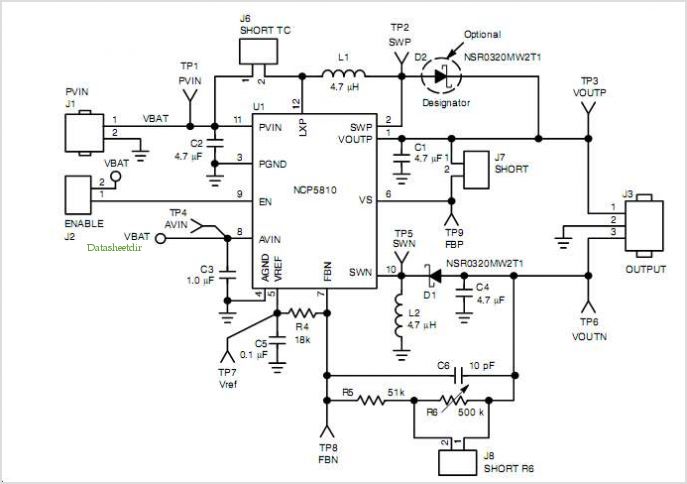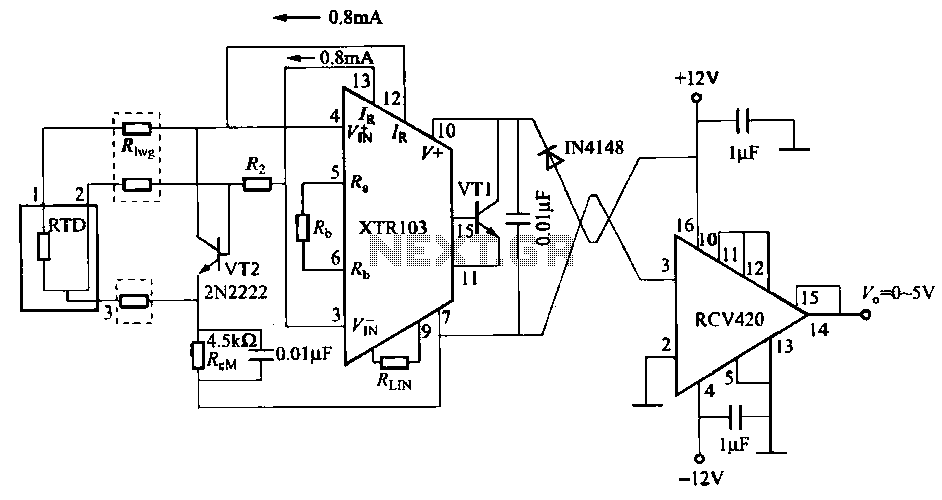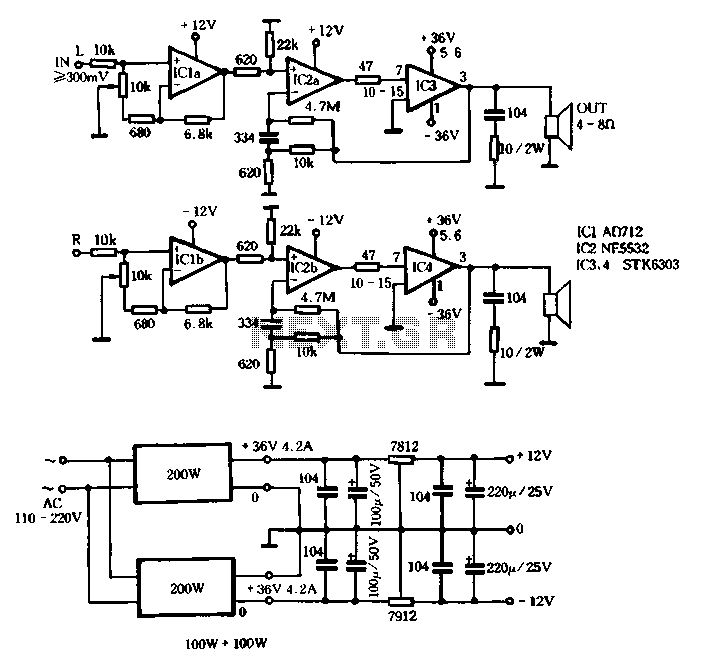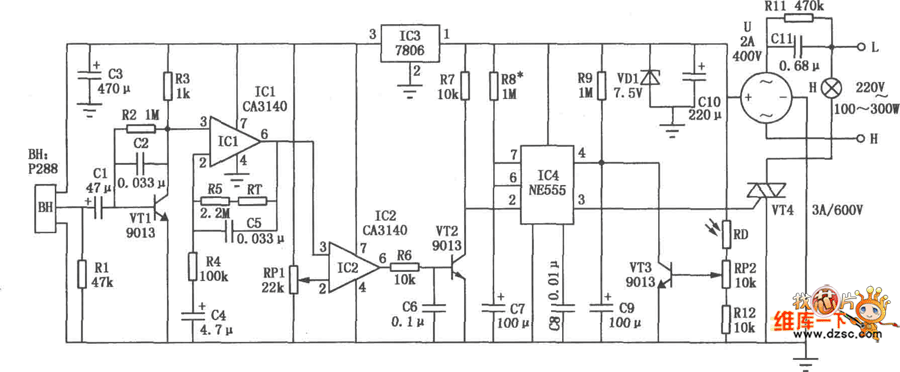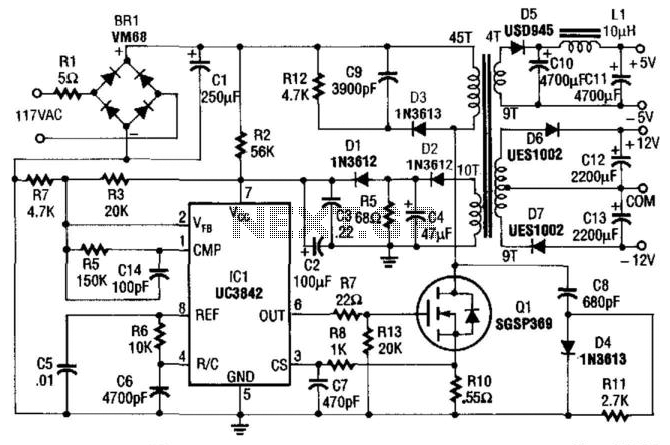
Current sensing in supply rails
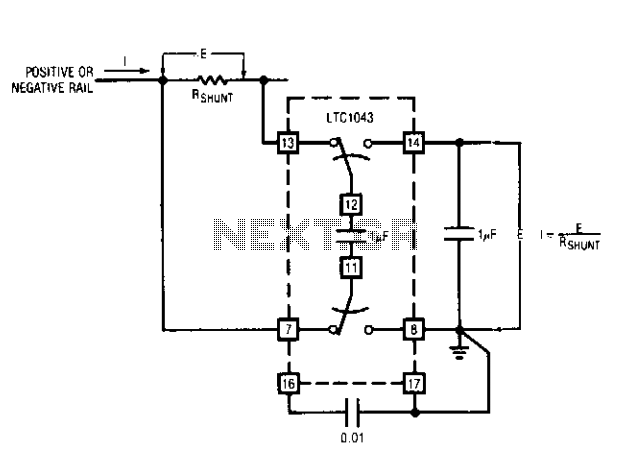
This capability has wide application in battery and solar-powered systems. If the ground-referred voltage output is unloaded by an amplifier, the shunt can operate with very little voltage drop across it, minimizing losses. The LTC1043 can sense current through a shunt in either of its supply rails.
The LTC1043 is a precision current sensing integrated circuit designed for use in battery and solar-powered applications. It employs a shunt resistor to measure current flow, providing an efficient means of monitoring power usage with minimal voltage drop across the shunt. This characteristic is particularly beneficial in low-power systems where efficiency is paramount.
The device's ability to sense current in both supply rails enhances its versatility, allowing it to be integrated into various circuit configurations. The shunt resistor is connected in series with the load, and the voltage drop across it is proportional to the current flowing through it, following Ohm's law. This voltage drop is then amplified by the LTC1043, which can be configured to provide a ground-referred output voltage that represents the current flow.
To further enhance performance, the LTC1043 features low offset voltage, low drift, and high common-mode rejection, ensuring accurate current measurements even in the presence of noise and varying supply voltages. The output can be interfaced with microcontrollers or other monitoring systems for real-time data acquisition and analysis, making it an ideal choice for applications such as battery management systems, solar charge controllers, and energy monitoring devices.
In summary, the LTC1043's design allows for precise current sensing with minimal losses, making it a suitable component for efficient energy management in battery and solar-powered systems. Its capability to operate effectively in different supply rail configurations adds to its utility in diverse electronic applications.This capability has wide application in battery and solar-powered systems. If the ground-referred voltage output is unloaded by an amplifier, the shunt can operate with very little voltage drop across it, minimizing losses. The LTC1043 can sense current through a shunt in either of its supply rails.
The LTC1043 is a precision current sensing integrated circuit designed for use in battery and solar-powered applications. It employs a shunt resistor to measure current flow, providing an efficient means of monitoring power usage with minimal voltage drop across the shunt. This characteristic is particularly beneficial in low-power systems where efficiency is paramount.
The device's ability to sense current in both supply rails enhances its versatility, allowing it to be integrated into various circuit configurations. The shunt resistor is connected in series with the load, and the voltage drop across it is proportional to the current flowing through it, following Ohm's law. This voltage drop is then amplified by the LTC1043, which can be configured to provide a ground-referred output voltage that represents the current flow.
To further enhance performance, the LTC1043 features low offset voltage, low drift, and high common-mode rejection, ensuring accurate current measurements even in the presence of noise and varying supply voltages. The output can be interfaced with microcontrollers or other monitoring systems for real-time data acquisition and analysis, making it an ideal choice for applications such as battery management systems, solar charge controllers, and energy monitoring devices.
In summary, the LTC1043's design allows for precise current sensing with minimal losses, making it a suitable component for efficient energy management in battery and solar-powered systems. Its capability to operate effectively in different supply rail configurations adds to its utility in diverse electronic applications.This capability has wide application in battery and solar-powered systems. If the ground-referred voltage output is unloaded by an amplifier, the shunt can operate with very little voltage drop across it, minimizing losses. The LTC1043 can sense current through a shunt in either of its supply rails.
